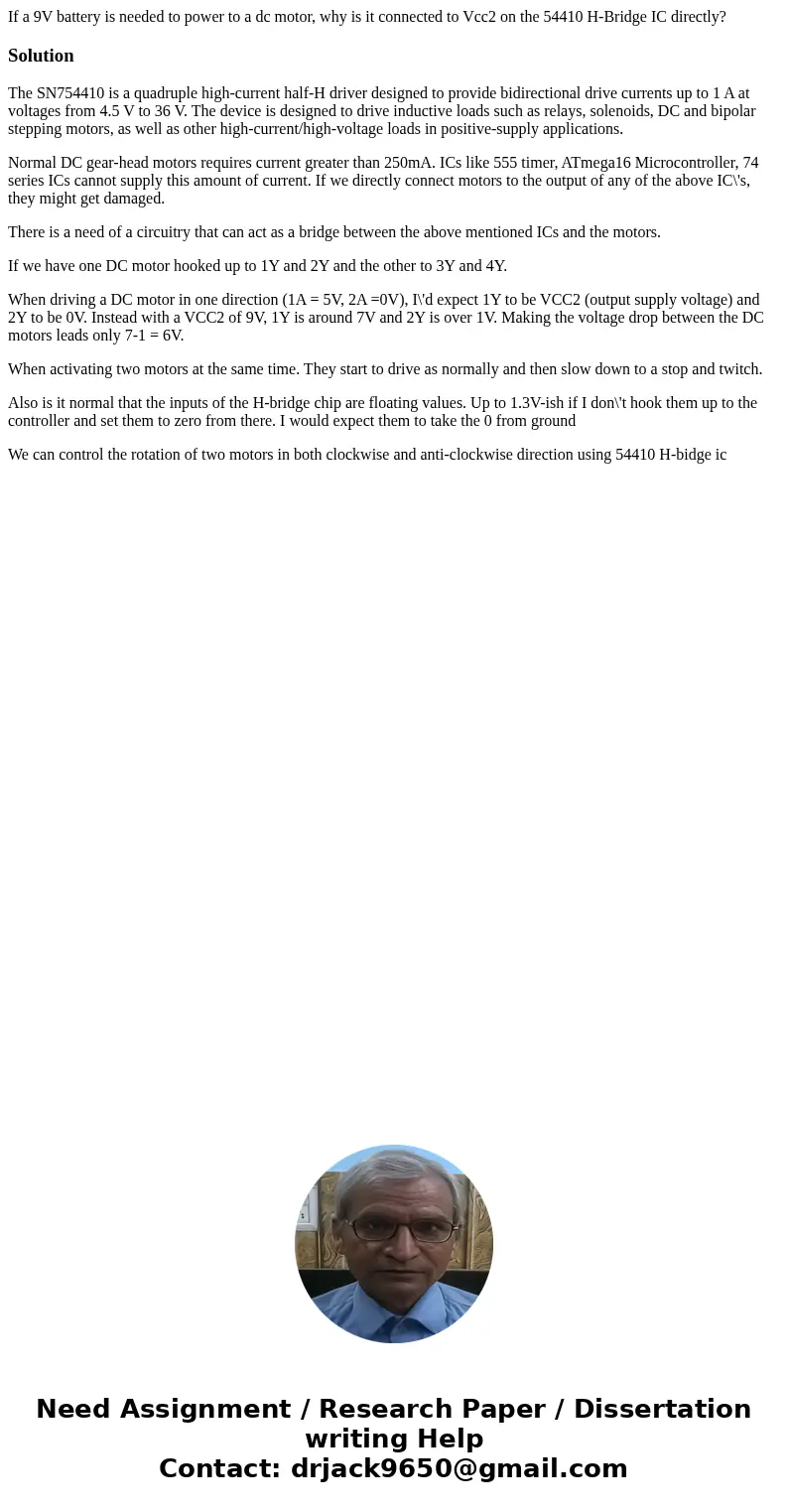If a 9V battery is needed to power to a dc motor why is it c
If a 9V battery is needed to power to a dc motor, why is it connected to Vcc2 on the 54410 H-Bridge IC directly?
Solution
The SN754410 is a quadruple high-current half-H driver designed to provide bidirectional drive currents up to 1 A at voltages from 4.5 V to 36 V. The device is designed to drive inductive loads such as relays, solenoids, DC and bipolar stepping motors, as well as other high-current/high-voltage loads in positive-supply applications.
Normal DC gear-head motors requires current greater than 250mA. ICs like 555 timer, ATmega16 Microcontroller, 74 series ICs cannot supply this amount of current. If we directly connect motors to the output of any of the above IC\'s, they might get damaged.
There is a need of a circuitry that can act as a bridge between the above mentioned ICs and the motors.
If we have one DC motor hooked up to 1Y and 2Y and the other to 3Y and 4Y.
When driving a DC motor in one direction (1A = 5V, 2A =0V), I\'d expect 1Y to be VCC2 (output supply voltage) and 2Y to be 0V. Instead with a VCC2 of 9V, 1Y is around 7V and 2Y is over 1V. Making the voltage drop between the DC motors leads only 7-1 = 6V.
When activating two motors at the same time. They start to drive as normally and then slow down to a stop and twitch.
Also is it normal that the inputs of the H-bridge chip are floating values. Up to 1.3V-ish if I don\'t hook them up to the controller and set them to zero from there. I would expect them to take the 0 from ground
We can control the rotation of two motors in both clockwise and anti-clockwise direction using 54410 H-bidge ic

 Homework Sourse
Homework Sourse